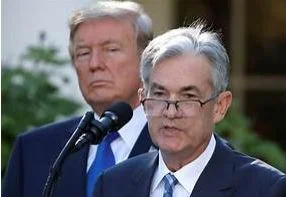A year ago, it was tighten, tighten, tighten, now three rate cuts are expected by the market by year-end. Gromen told Harrison that Trump’s tariffs matter some, but, it’s the deficits that really matter and are forcing the Fed’s hand.
All in Economics
Financial Markets: What Could Go Wrong?
The U.S. and EU banks are enormously intertwined, particularly in terms of funding and derivatives. Corporate debt has exploded and the bond market is only liquid in one direction. Zero interest rates have pushed pension plans to the brink of insolvency, even with a bull market.
The Hidden Housing Crisis
Most believe it’s clear sailing for housing. Jurow’s view its anything but rosy for housing. He believes the housing rebound is a mirage orchestrated by lenders and mortgage servicers keeping foreclosed homes and subprime loans in serious default off the market. In other words, there are millions of homes just waiting to hit the market. Sometime.
IS WALL STREET'S SWAMP BEING DRAINED?
When they begin saying they are going to work on their balance sheets, that’s code for paying down debt and will be the end of share buybacks. As DiMartino Booth puts it, companies will then be taking care of bond holders rather than shareholders. The implication is the liquidity driving the bull market will seize up and a market correction is on the way.
Inflation: The Rumors of its Death are Greatly Exaggerated
Banks bitten in 2008, are, along with their regulators, twice shy to make the marginal loan. The short summary of Hanke’s remarks in the latest Grant’s Interest Rate Observer, includes, “But he invited the audience to imagine an upsurge in bank lending, perhaps stimulated by a Federal Reserve decision to pay a reduced rate of interest on excess reserves.”
Despite Fed Liquidity, Mall Value Plunges
The mall was encumbered by a $200 million commercial real estate mortgage, well supported by the 2007 value for the property of $250 million. However, by 2017, SPG defaulted because it was “unable to repay the loan at maturity due to the size of the loan compared to the net operating income that the property generates and the tenants inability to increase sales due to the economic challenges.”
Vlad and Elvira Sell Dollars and Buy Gold, Should You?
Russia is not alone in lightening up on dollar exposure. In the 4th quarter of last year, “reserve managers actively decreased their allocation to USD—the share of USD reserves declined despite modest Dollar appreciation—while they actively added to EUR and CNY reserves. According to Goldman calculations, the drop in Q4 USD reserves was equivalent to just over $50 billion in dollar reserves sold,” reports ZeroHedge.com.
Banks’ Unrealized Losses soon to be Realized
The folks at GNS Economics, in their “Q-Review 1/2019” report, contend, contrary to the president, “the global economic recovery since 2009 has not been real. It has been achieved with massive debt and monetary stimulus, which has created an economy where normal rules of the market economy do not apply.”
Recession will Turn Debt into Junk with Nowhere to Hide
None of this has kept individuals, companies and governments from ramping up debt levels. Leverage abounds, everywhere. Grant’s Interest rate Observer writes, “companies are tapping credit lines to compensate for shortfalls in cash flow.”
The Trouble with Complacency
Everything is A-OK and warm and fuzzy for the investing public. “Social optimism is evident everywhere,” writes Prechter. “Optimistic investment in stocks and junk bonds remain at historically high levels. Indebtedness is also historically high. Student loans are at a record. Auto loans--many of them for SUVs, muscle cars and tricked-up trucks--are at a record.”
“Profit is an Opinion; Cash is a Fact”
Stephen Grocer points out these same analysts last October had projected earnings to surge 6 percent from a year ago. Then at the start of this year, the analysts trimmed their guesses to a 3.3 percent increase. Now, they’ve caught up with Ms. Pomboy.
The Transportation Boom Ends
Less shipping means less buying, selling, and producing. Government interference in the form of low interest rates and the threat of tariffs pulled economic activity forward. However, now the economy is digesting that bubble of activity.
Central Banks Buy Gold, Baltic Dry Index Sinks
Central Bankers never seem to get the timing right in buying and selling gold.
Synthetic Danger, Again
The whole idea of capital relief, as the name would imply, is to lower the amount of equity required and increase leverage. What’s a banker to do when a pension or hedge fund rep stops by and offers to unlock some of his or her bank’s idle capital?
Already Bloated with Real Estate, Blackstone Bellies Up for More
Real estate fortunes rise and fall with interest rates. Low rates equal high values, high rates the opposite. If rates begin to rise as Mr. Grant’s father, Jim Grant of Grant’s Interest Rate Observer, believes, BX’s timing couldn’t be worse. Or, it may be possible, Blackstone will be fishing for distressed deals when the RE shit hits the fan.
End This “Expansion” Now Chairman Powell!
The central bank creates expansions and then murders its darlings, to borrow a phrase. Austrian economists say booms are the problem, with low interest rates breathing life into ill-conceived ventures and, once hatched, keep them from death’s door, wasting capital to the detriment of society. Recessions and depressions cleanse the economy of these malinvestments, re-aligning production with society’s collective time-preference.
Less Fed, Less Bubble
We often hear that rich are getting richer and everyone else is being left behind. However, it is only the Austrians who point to the Fed’s policies as creating this great divide in wealth and incomes.
Tariff Man Breaks Windows
Boehm points out that the 300 hundred jobs came to life after “American companies have paid about $690 million in tariffs to the federal government.” That works out to $2.3 million per job we know about or $300,000 per possible job.
Tweets, Bondies & Junky Monkeys
the market believed Jerome Powell sounded all lovey dovey with his comments after last week’s Fed pow wow. But, Business Insider says the “junky monkeys” didn’t hear Powell right. BI says the “bondies” are the real Powell whisperers.
The Trouble with CoCo
CoCos are similar to trust preferred debt that community banks in the U.S. stuffed balance sheets with in the early 2000s. While trust preferred was debt, the terms were so liberal, banking regulators allowed banks to count the debt as equity.




















